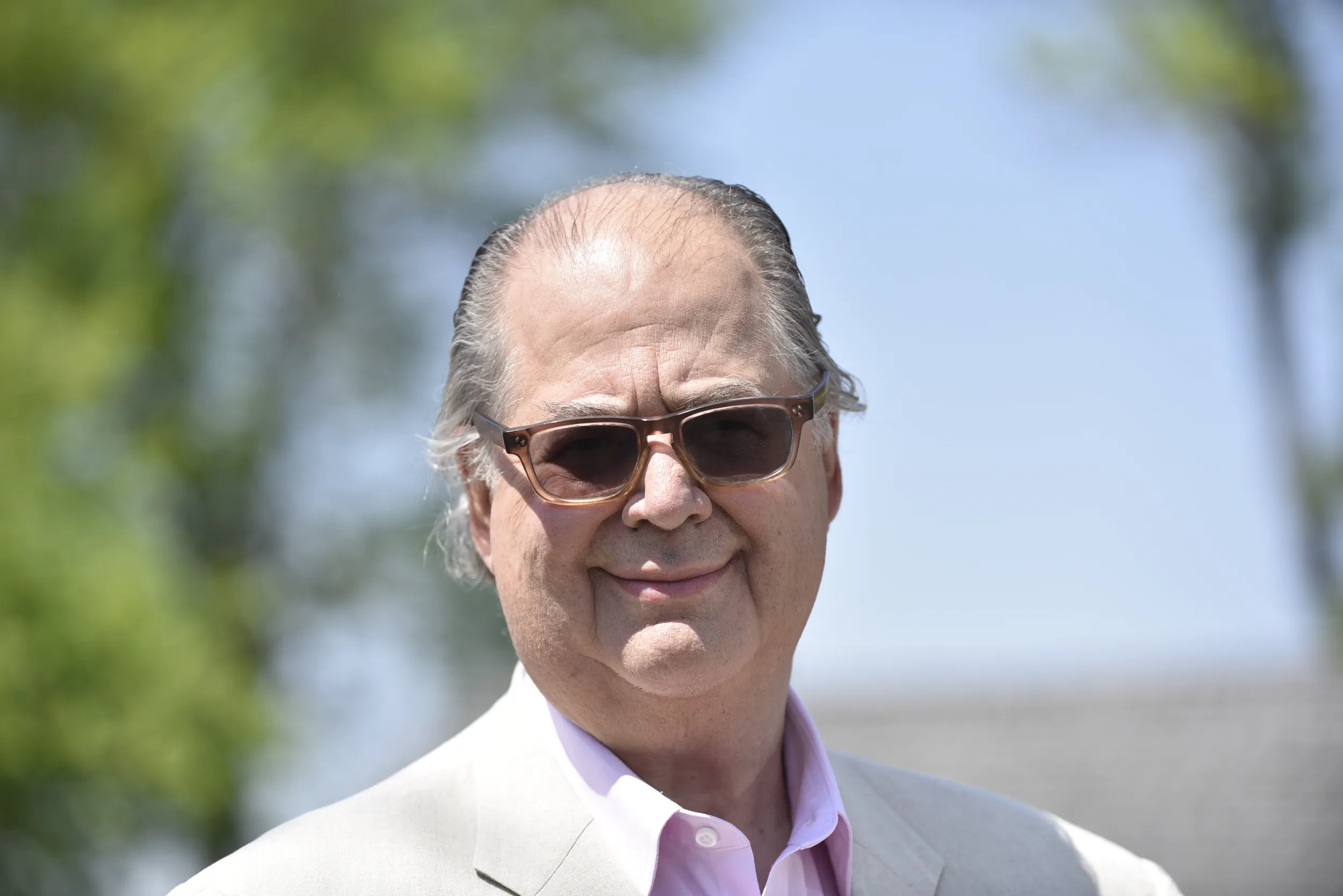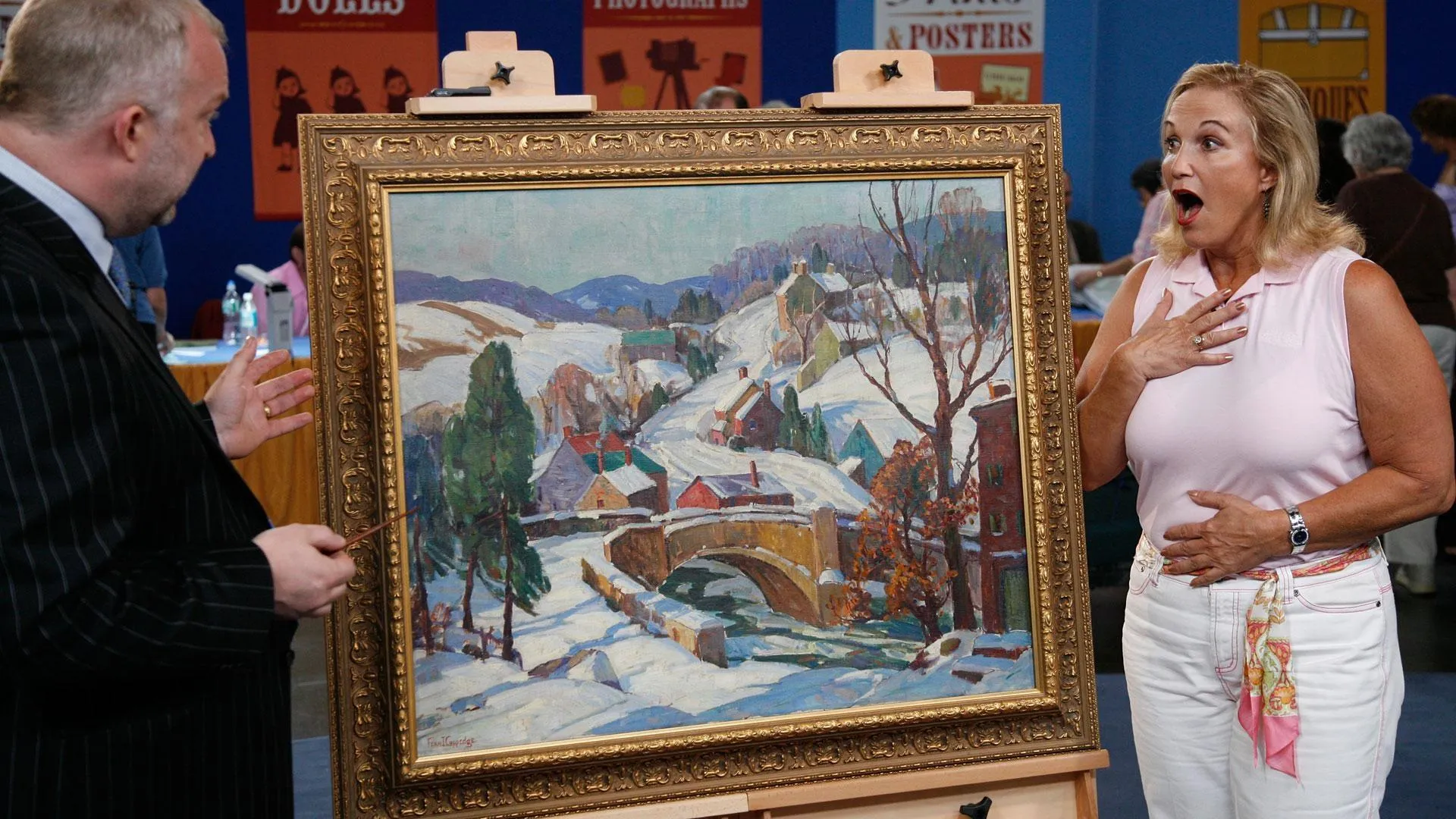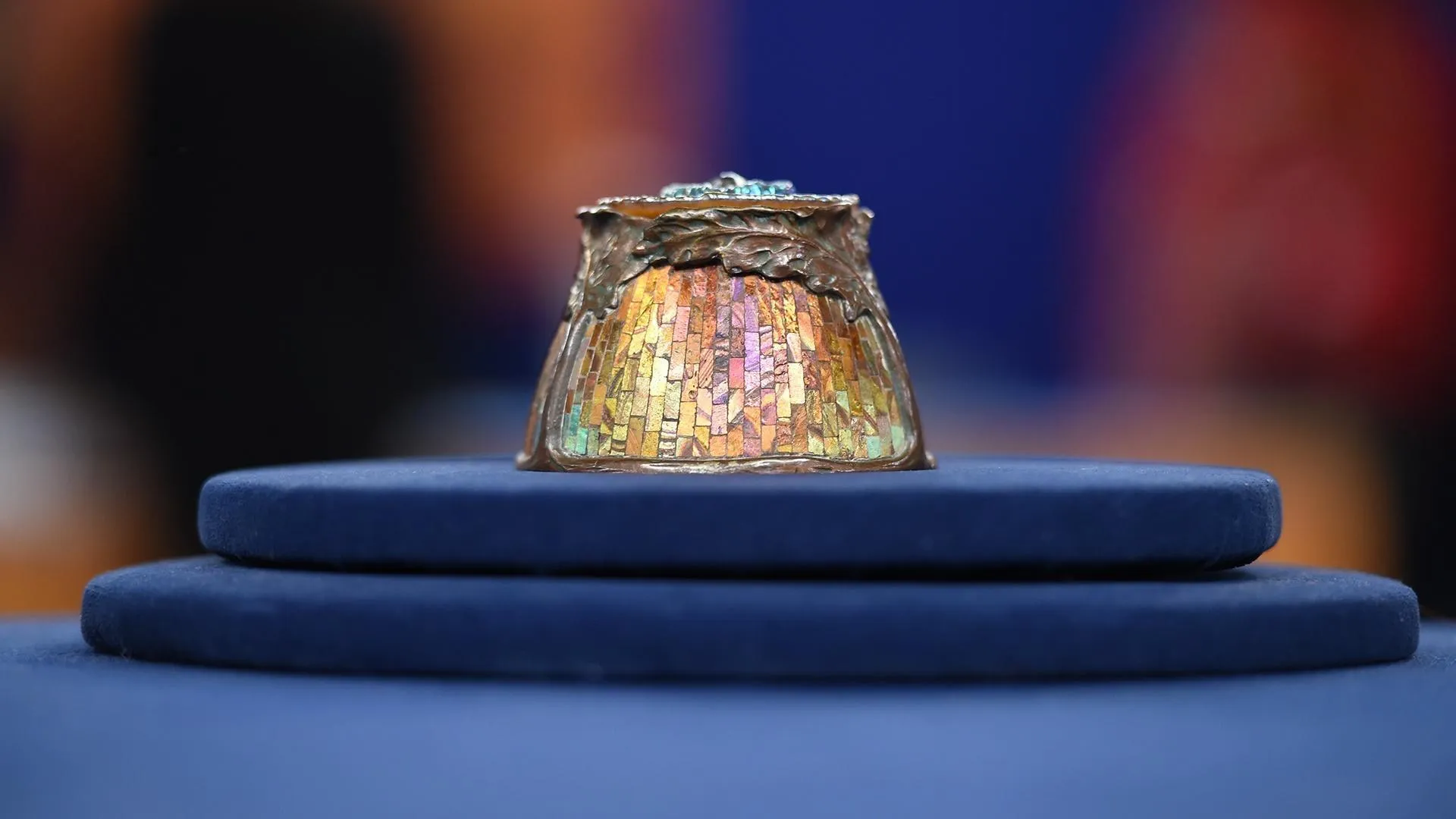GUEST: Well, it was handed down to me by my great-grandfather, and I've just always been curious as to whether or not it was an original piece or whether it was mass-produced at the time. The date says 1904, so it's obviously very old, and, um, just want to know more about it.
APPRAISER: Okay, well, it actually is from 1904, and it's something that I've seen before a number of times.
GUEST: Uh-huh.
APPRAISER: It's a chafing dish on stand, but it's copper with silver on it, also. And then these wonderful little bunnies...
GUEST: Yeah.
APPRAISER: ...are cast out of bronze. All of this is hand-hammering.
GUEST: Yeah.
APPRAISER: Really wonderful, wonderful craftsmanship. Did you get it this way? Was it this shiny?
GUEST: Um, yeah, it was.
APPRAISER: Mm-hmm, it was.
GUEST: Yeah.
APPRAISER: Well, that's one of the problems with the piece.
GUEST: Okay.
APPRAISER: Because it's not supposed to be shiny like this.
GUEST: Oh, all right.
APPRAISER: It's actually supposed to have a very dark, brown patina on it.
GUEST: Ah...
APPRAISER: And then the silver would have been polished to contrast against the dark, patinated copper background.
GUEST: Right.
APPRAISER: And this is one of the instances where polishing it, or it being in this condition, really decreases the value tremendously.
GUEST: I see.
APPRAISER: The way it is now, it's still worth probably about $600 or $800.
GUEST: Okay.
APPRAISER: If it was with the original patina on it, it would probably be in the $2,000 to $3,000 range.
GUEST: I see. Is it possible to remove the patina and put it back in its original form?
APPRAISER: Well, the patina's already been removed. So what you're seeing, this is the raw copper.
GUEST: Oh, I see.
APPRAISER: So it's shiny, like a new penny.
GUEST: Yeah, right.
APPRAISER: You can have a restorer put a patina on it. You know, in terms of the market, you'd have to tell the person that that's been done. It
probably would increase the value.
GUEST: Yeah, yeah.
APPRAISER: Because it would look more authentic.












